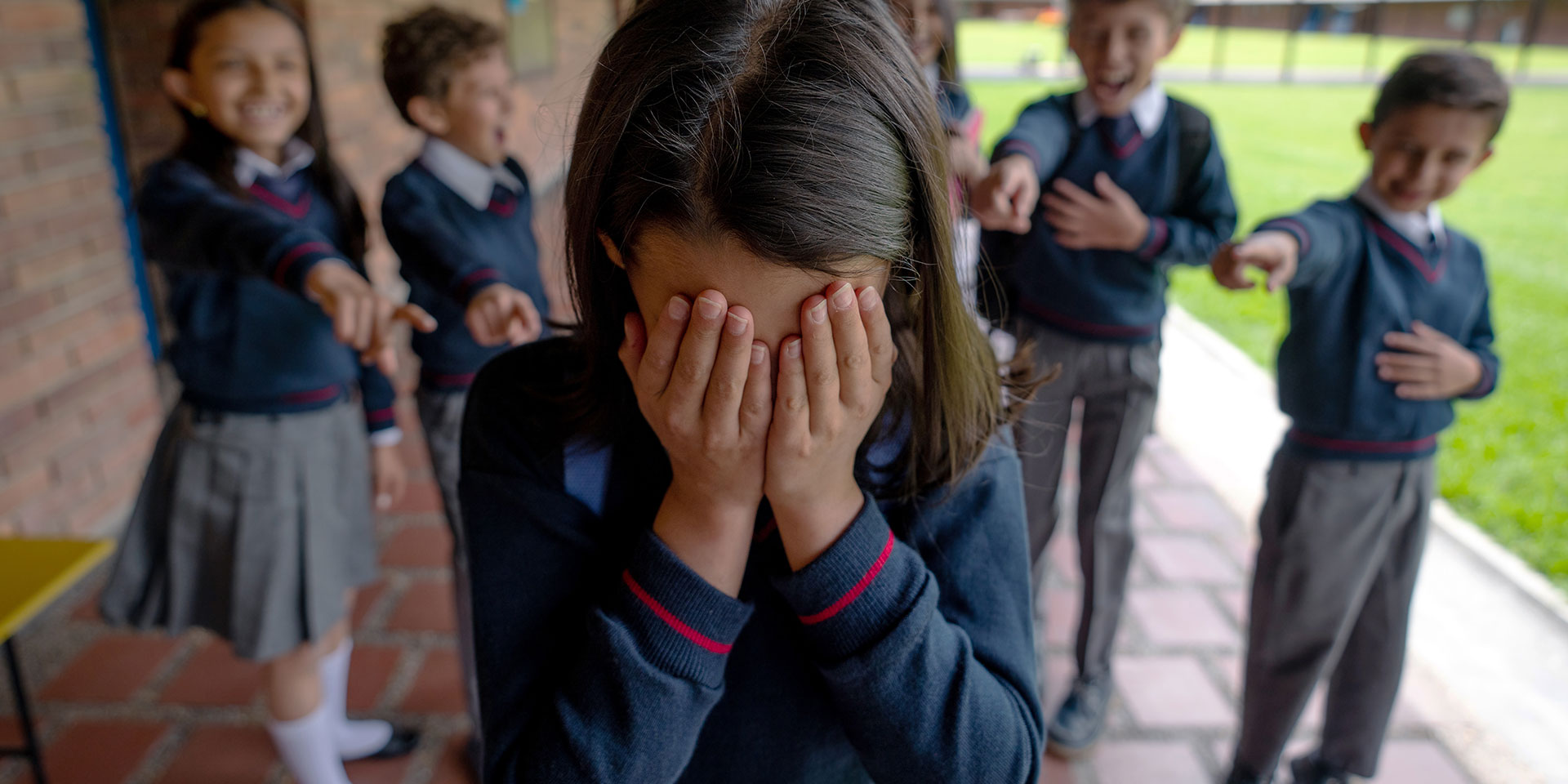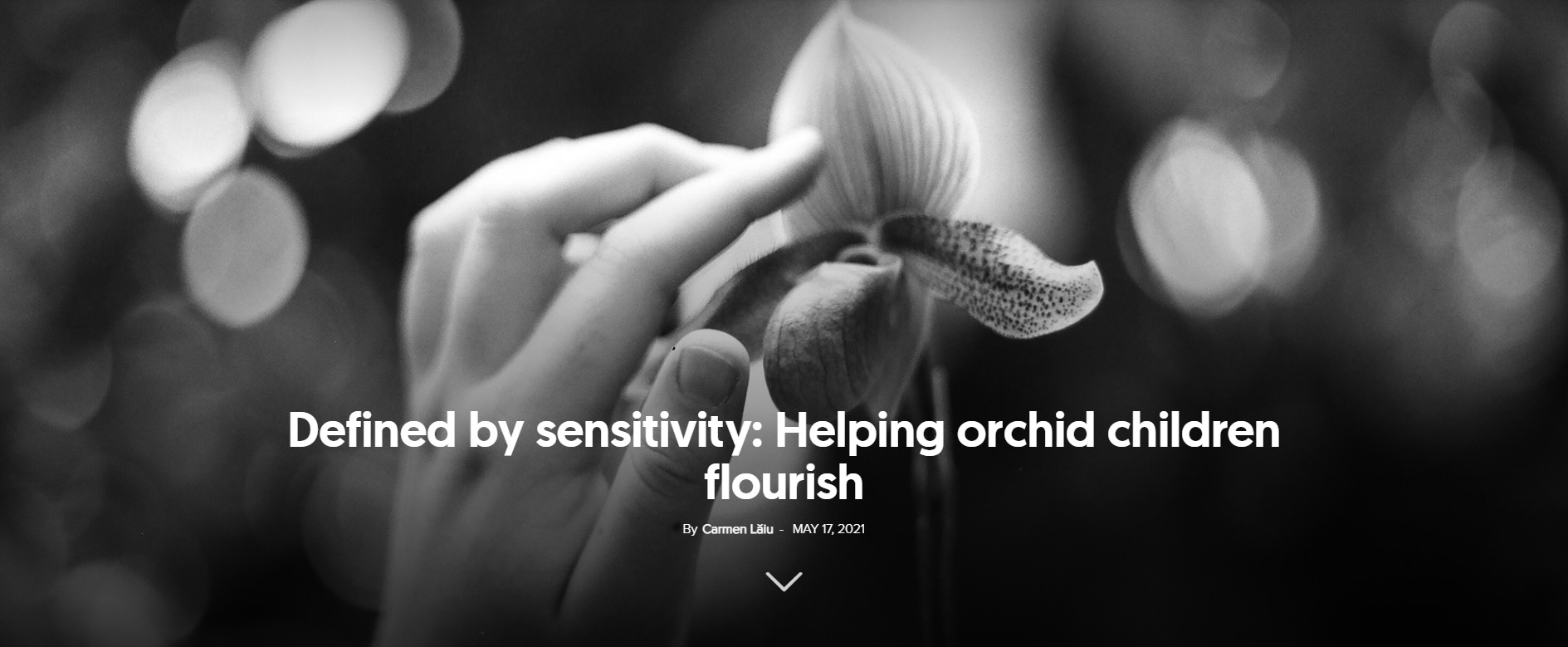Children who fall prey to bullying cannot save themselves, just as the children who have become accustomed to bullying others will not give up this behaviour without outside intervention. As the phenomenon of bullying spreads, with harmful consequences on children’s development, the need to know and apply strategies to combat it is becoming more pressing.
Considering the spread and the harmful effects of bullying, the American Medical Association believes that it has become a public health problem. More than 20% of American students say they have been bullied at school, with bullying reaching the highest levels in middle school, especially among sixth graders. Moreover, 59% of teenagers complain that they have been bullied online, and 60% of cyberbullying victims complain that their learning ability has been impaired.
In 2018, Russia had the highest rate of students who suffered from bullying in Europe: 37% of 15-year-olds reported being bullied at least a few times a month.
The percentage of children who were frequently victims of bullying was also high in Latvia (35%), Romania and Bulgaria (both 34%) and lower in countries such as Croatia (18%), Iceland (17%), Spain (17%), Portugal (14%) and the Netherlands (12%).
Not every conflict is bullying
Bullying is an umbrella term for a wide range of aggressive behaviours that a person (in this case, a child) uses to intimidate, control, and cause suffering to another person. Common types of bullying include: verbal (mockery, insult, threat, sexual comments), physical (hitting, hair pulling, spitting, tripping, destroying or appropriating another child’s property), relational (involves using the friendship or threatening to end the relationship to hurt the other) and cyber bullying (using electronic devices to repeatedly harass or threaten to expose a person).
Although bullying can occur anywhere, statistics show that it flourishes in the school environment. It is true that all children sometimes behave rudely, even in a mean way, but bullying is more than mean behaviour, a conflict, or a simple fight.
Bullying is more than mean behaviour, a conflict or a simple fight.
Conflicts occur by chance, are not serious, involve the existence of a relative balance of power, and do not seriously affect either party emotionally. In general, children involved in a conflict are eager to resolve it, so that they can play and spend time together again. In the case of bullying, hostile behaviour is intentional, repeated over time and involves an obvious imbalance of power. While children can be left to resolve their own misunderstandings, thus acquiring skills to resolve them, in bullying episodes, adults must intervene promptly to stop the abuse and protect the victim.
Bullying leaves its mark on a child’s development and on their physical and emotional health. Students who face bullying face an increased risk of depression, anxiety, sleep difficulties, poorer school results, and a higher dropout rate. In a 2017 study, students reported that the way they were treated interfered with their self-image (27%), relationships with friends and family (19%), school results (19%), and physical health (14%). Cyberbullying does even greater damage, according to a study conducted in 2020: almost 70% of adolescents surveyed said that cyberbullying has lowered their self-esteem, while over 30% reported that this kind of harassment affected their friendships. Teenagers who bully others and are bullied themselves have a higher risk of mental health deterioration and behavioural problems, compared to those who are either only victims or only abusers, according to data published in 2019 by the Center for Disease Control.
The bullying phenomenon (and especially its cyber form) is associated with suicidal thoughts, but also with suicide attempts, concluded a 2014 study.
Differentiating bullying from ordinary conflicts or occasional, unplanned bickering is needed, because it helps us avoid desensitization to this phenomenon. The overdiagnosis of bullying only deprives children who are in the greatest need of human and financial resources.
Why do children become bullies?
For a long time, researchers believed that there was only one profile of the bully: the violent child, with low self-esteem, who comes from an environment of abuse or neglect, says Dorothy Espelage, professor of education at the University of North Carolina.
Since then, our image of the bully has become much more nuanced, with experts arguing the importance of focusing more on the motivation for violent behaviour than on a typology of the bully child.
The reality is that any child can bully others at some point, writes Signe Whitson, a social worker and school counsellor, suggesting that moving from the question of the bully’s identity to the reason for violent behaviour facilitates focusing on solutions to the problem.
The desire to gain social status is one of the reasons why children and adolescents bully their colleagues and friends, says Whitson. The idea that bullies always have low self-esteem is a myth that has been dismantled in recent years, says the school counsellor, recalling studies and experts who have found that many children who bully their peers, far from being insecure about themselves, are self-confident and quite popular in their circles.
Bullying is encouraged not only by the absence, but especially by the indifference, of adults.
The desire to maintain power and control is another reason why children resort to bullying. The attention received from their entourage on the occasions when they humiliate others is another reason to engage in bullying behaviours, which is why witnesses who laugh, encourage or have no reaction to the aggression increase the chances of bullies repeating the violent act.
Most acts of aggression take place away from the eyes of adults—in locker rooms, toilets, in the school yard, on the school bus. Bullying is encouraged not only by the absence of adults, but especially by adults’ indifference. The message sent by adults through words, actions or lack of involvement shapes the perception of young people about the severity of bullying, say specialists from the Center for Safe Schools.
Although any child can be subject to bullying, some categories are more vulnerable to stigma and violence. Because bullying involves an imbalance of power, children with any type of disability, whether physical, developmental, intellectual, or emotional are a favourite target of bullies. According to studies, children with disabilities are two to three times more likely to become victims of aggression compared to their non-disabled peers.
Excess weight is another predictor of stigma, despite the increasing prevalence of obesity in children. Obese children ages 8-10 are more likely to be bullied by their peers, regardless of gender, race, socioeconomic status, social skills, or school performance, according to a study by University of Michigan researchers. Socially isolated children, who have failed to make a network of friends, and the emotionally unstable, are other potential victims of the social aggression game.
Strategies to combat bullying
The best way to combat bullying is to help children adjust to their differences, says Denis Sukhodolsky, an expert in anger and aggression in children and professor at the Yale Child Study Center. “You can’t replace bullying with isolation. You have to replace it with friendships”, says Sukhodolsky.
It’s an ambitious goal, because there are no simple solutions to the problem of bullying. In fact, educators lack the funds and have too little time to train themselves on this issue and to deal with bullies, victims, and their parents. Parents feel poorly qualified to deal with this problem, so dealing with bullying is overwhelming, explains Signie Whitson. The good news, however, says the school counsellor, is that small steps can be taken daily to build positive relationships between adults and children, but also to cultivate changes that make the environment less susceptible to aggression.
“You can’t replace bullying with isolation. You have to replace it with friendships”.
Building positive, trusting relationships between parents and children, on the one hand, and children and educators, on the other, is one of the keys to success in combating bullying.
For various reasons, such as fear of making the situation worse and the desire to be a normal child at least at home, some children suffer in silence without sharing with adults any information about the humiliating treatment they are subjected to. In the absence of deep relationships between children and adults, bullies will continue to humiliate their victims without fear of adult disapproval, victims will feel isolated and helpless, and witnesses will have no one to report the abusive incidents to. While 49% of children reported being bullied during the school year, only 32% were believed by their parents, writes bullying prevention expert Michele Borba.
Adults must learn to listen attentively, to express compassion, to thank the children for having the courage to share their experience, and help children regain the feelings of power and control. Also, they must collaborate with educators to create multiple confidential methods of reporting bullying behaviours.
Sometimes, the family environment can expose children to aggression in ways that parents are barely aware of. Parents should look at older siblings’ behaviour, the way they themselves talk to their partners and children, and how they manage their anger, to see if the family environment is involved in shaping victim or abuser behaviours, says psychologist Kristin Carothers.
Building a protective family environment in which everyone is treated with kindness and respect is a good strategy to prevent bullying in schools.
Parents must be aware of the signs that give away the fact that their children may be victims of bullying or bullying others themselves. They also need to access the available resources to learn how to equip their children with the skills they need to interact correctly.
A study of 12,000 American students found that the advice often given to harassed children (“stay away from the bully”, “tell the other person how you feel”, “tell the bully to stop,” “pretend that it doesn’t bother you”) only made the situation worse. The top tips and useful attitudes were adults’ availability to listen to the victim, offering strategies for crisis management and their consistency in making sure the bullying really stopped.
The development of social and emotional skills is a key factor in effective bullying prevention programs. In fact, programs based on building basic social-emotional skills (empathy, emotion management, conflict resolution, relationship skills) are used in about 40% of US schools and have proven more effective in preventing aggression than other programs.
Studies that analyse the behaviour of bullying witnesses show that it is not the manner of intervention, but the involvement itself that discourages bullying.
Raising witness awareness and transforming them into allies is a major key to combating bullying. In 9 out of 10 incidents of school bullying, bystanders are present, but less than 20% of them take a pro-victim stance, according to a 2001 study. However, when witnesses do choose to get involved, more than half of the incidents end in less than 10 seconds. Anti-bullying interventions do not have to be complex, writes Signe Whitson in the Friendship and Other Weapons book, offering some short remarks that can be used by children who witness an act of bullying: “Don’t say that! It’s mean!”, “It’s not nice what you’re doing!”, “Stop! You went too far!” In fact, studies show that it is not the manner of intervention, but involvement itself that discourages bullying, so Whitson believes it is essential to prepare our children to intervene during the incident, but also after it is over, to support the victim.
Teachers’ intervention in stopping bullying and creating a safe environment in the classroom is a powerful tool to combat bullying, according to specialists. Teachers play a key role in managing incidents of aggression, as well as in strengthening students’ confidence that the school environment is safe and they are protected. Among teachers’ reactions to bullying, the most common are punitive strategies (most used, but with minimal effects), individual assistance to both victims and bullies and the support-cooperation strategy, which involves the whole group of students and involves actions for the entire class or school, with the support of parents and professionals.
How can bullies be helped?
Bullying children don’t do it simply because they are “bad kids”. In fact, children sometimes engage in behaviours that don’t characterize them, that don’t reflect what they are as individuals, says Dr Jamie Howard, director of the Stress and Resilience Program at the Child Mind Institute.
Therefore, parents must identify the reasons behind their children’s actions: Are they aggressive because they have been bullied as well? Do they join other bullies for fear of becoming a victim? Are they frequently exposed to scenes of violence in family relationships or in the programs that they watch?
Reasons for being a bully include emotion management impairment (which in turn may come from a family environment where anger and frustration are manifested in unacceptable ways), impulse control impairment, and attachment issues.
In correcting aggressive behaviour, positive interventions have proven to be much more effective than punitive ones.
After exploring the reasons why their child is aggressive, parents can develop an action plan, presenting to the child the consequences they will face if they don’t stop. Experts say that positive interventions have proven to be much more effective than punitive ones, so parents should focus on modelling positive social behaviours and building cooperation and conflict resolution skills. Positive feedback is very important because it helps reinforce desirable behaviours.
The whole concept of bullying should be nuanced when we talk about children, points out psychologist Robyn Koslowitz. Instead of referring to bullying as a crime that needs to be punished, it is better to treat it as behaviour that needs to be corrected.
There isn’t a more unpleasant position than being the parent of a child who is bullying others. In fact, it takes courage to recognize your own child’s cruel behaviour, instead of looking for excuses and culprits, but also to accompany and guide them through the process of change. The good news is that any learned behaviour can be unlearned, no matter how difficult this process may be. It’s one more reason to use the verb to describe dysfunctional behaviour than the labelling noun, says researcher Allison Wedell Schumacher. The label suggests being stuck in the wrong position, while the verb expresses hope for change. And change thrives best in the midst of affection (however abrasive it may be, when circumstances demand), because we need love the most when we know we deserve it the least.
Carmen Lăiu is an editor for Signs of the Times and ST Network.





















